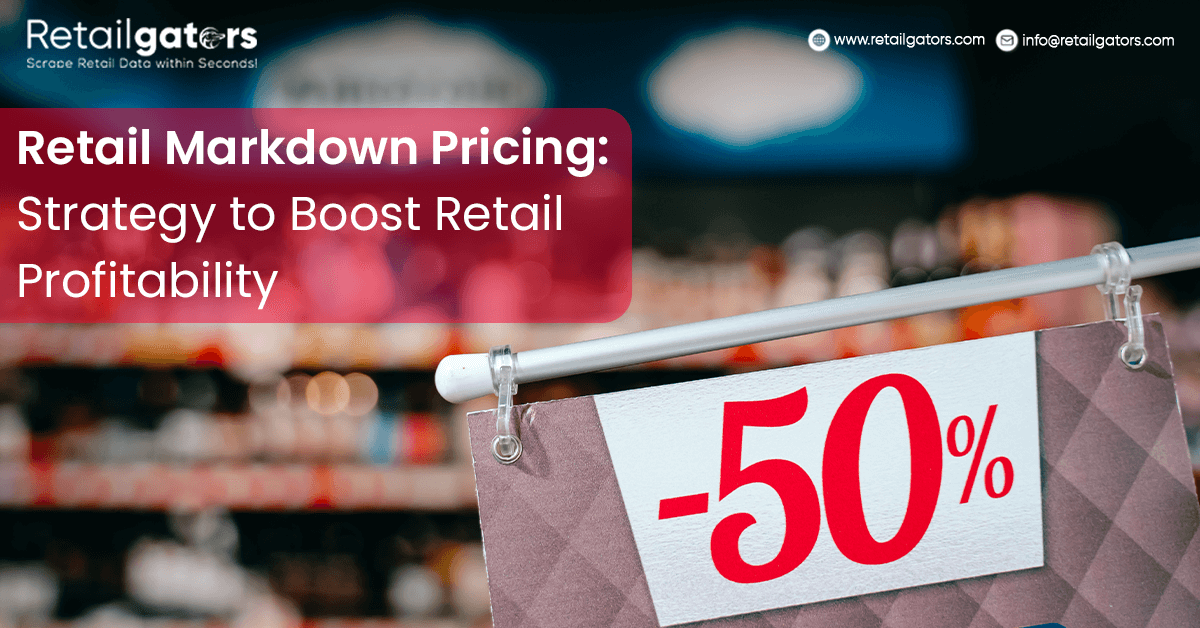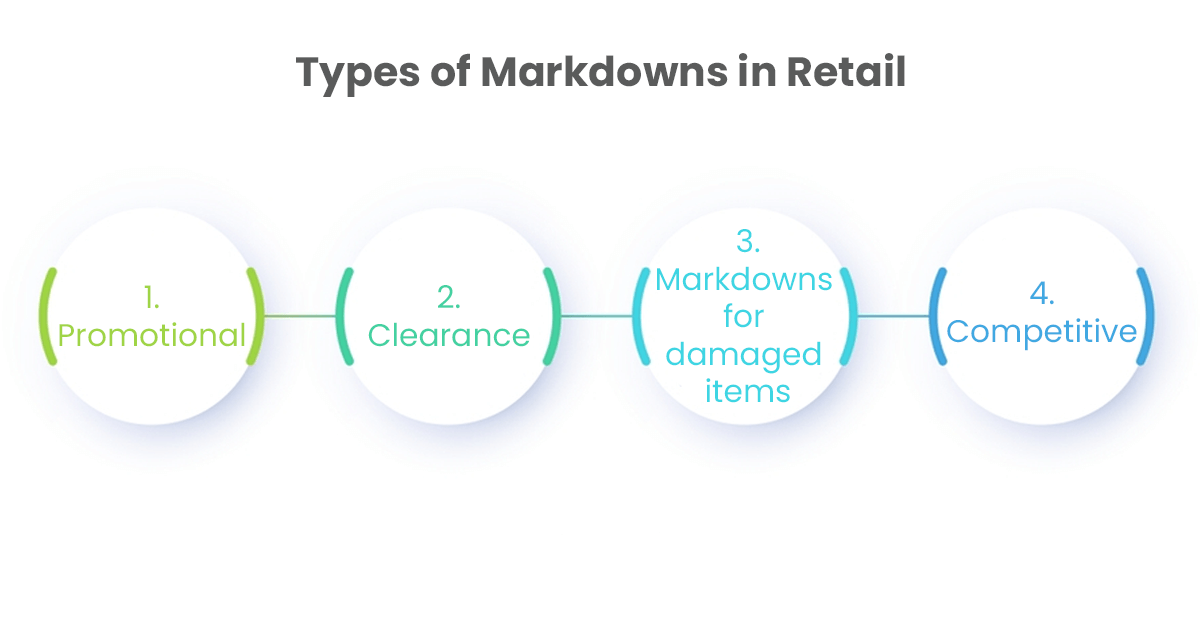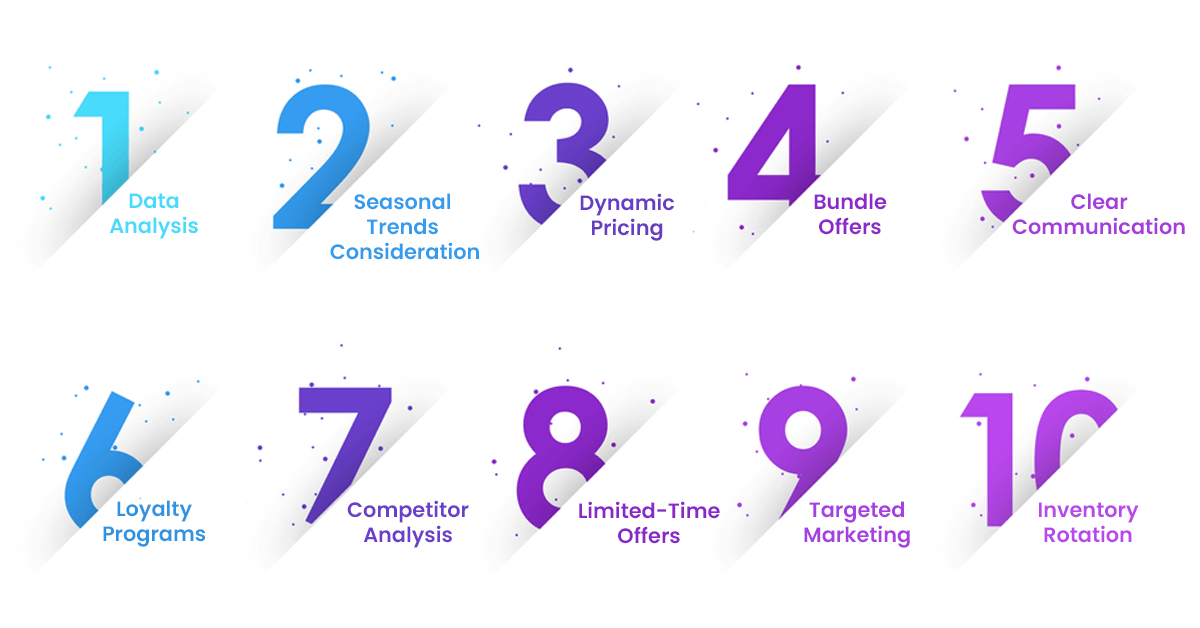
Imagine having a truckload of products sitting in your inventory.
Now, the real challenge isn’t only to maintain that product.
But selling that product as fast as possible so you can load another batch.
To sell fast, you need to apply a retail markdown strategy.
Before sharing more about markdown pricing strategy, check this Mckingsy report, which says that people in the USA are trading down and prefer buying from cheaper stores than brand outlets.
Now, that’s something to think about here.
But first, let’s understand what a markdown is in retail
What is a Markdown in Retail?

The aim of retail markdown strategy is to decrease the product price to uplift the sales, that’s the way to empty the inventory faster. To maintain the profitability of seasonal items, it is mandatory to prevent loss and waste while ensuring profitability.
Let’s understand this using an example. Imagine managing an eCommerce retail store where you sell multiple items, including holiday decorations, Christmas items, and holiday decorations. Due to slow buying, you couldn’t sell the expected lot before Christmas.
To sell off holiday decorations, you must decrease the cost to gain potential buyers. Since decoration items come in new shapes and sizes yearly, and people might not buy your old stock, the markdown pricing strategy will work in this scenario.
Which are the Types of Markdowns in Retail?

The following list contains the 4 types of markdown pricing in retail.
Promotional
Temporary price decreases, coupons, and endcap promotions are some of the elements included in promotional markdowns. All the discounts result from promotional sales only.
Clearance
The stock only goes into clearance when the retailer removes a specific product. The product can be anything like footwear or clothes that will get out of style after a certain period. Since people always choose to buy trendy clothes and footwear, the old stock becomes clear when retailers eliminate extra inventory by offering markdowns.
Markdowns for damaged items
If you receive damaged goods as a customer, you have two choices: ask for a discount or return the product. Post delivery, if a customer receives a damaged product, the retailer needs to give them a discount, which is known as a reduction for damaged goods.
Competitive
Markdown happens due to price matching. Competitors are playing a price match game to lure you toward them. Decreasing the price of their competitors for a while to increase sales is one of the strategies they follow to increase the number of sales.
What is the difference Between Markdown Pricing and a Discount Campaign?
Markdown pricing and discount campaigns work as price reduction strategies only. While a discount campaign focuses on temporarily increasing sales volumes, a markdown campaign uses a price decrease to sell all the products.
The table includes information about markdown pricing and discount campaigns.
| Markdown pricing | Discount campaign |
|---|---|
| The markdown pricing will increase sales while decreasing the overall product price | Discounts are offered to build loyalty and keep the momentum of the product. |
| Markdown campaign decreases the price to sell all the products out. | The aim of discount campaign is to increase sales for a short time |
| Markdown is directly connected with market value | Discount campaigns don't reflect a market value |
How does Markdown Pricing Solve the Problem of Profitability?
As a retailer, you aim to sell your products and increase profitability. But the challenge comes when your stock stays idle, and you cannot sell it on time, that’s when the concept of markdown pricing comes into the picture.
With a markdown strategy, you will have the freedom to reduce the prices of your product to increase sales while clearing out the additional inventory.
Let’s understand this with an example.
Let’s say you have 10 products with COGS. The goods sold are around INR 50, and the retail price is INR 100. Your goal should be to sell 10 products also, to sell all your products, and sell those goods at a lower price that’s the way to clear out your inventory.
After making the equal Along with reaching your break-even point, you can increase profits with all the sold items.
The following compares the two scenarios: the product is priced the same in the first scenario, and a markdown is applied to meet demand.
By using markdown pricing to maximize season sales, you can ensure you don't have unsold inventory, reducing your profits. Selling every one of your items can help you meet your goals, but if you only deal with a portion of them, your margin targets won't keep up. Thus, use markdown pricing in your sales plan to avoid losing money.
What are the 10 Ways to Create an Effective Strategy of Markdown Pricing?

The following are 8 ways to help you create an effective markdown pricing strategy for your business. Let’s check.
Data Analysis
In the data analysis phase, you need to regularly check the sales data to identify products with slow-moving inventory allowing you to apply markdowns to increase sales strategically.
First, it is essential to identify the products sitting on shelves for a long time and apply markdowns to increase sales of those products.
Seasonal Trends Consideration
Seasonal items generally have high demand. Therefore, adjusting the pricing to maximize revenue and apply markdown when demand decreases is essential.
Lower the price when the season ends to increase sales and empty the inventory.
Dynamic Pricing
Dynamic Pricing refers to adjusting the prices as the competition rises; the price also depends on market dynamics and demand. By being adaptable, you can maintain your edge and optimize revenue.
For example, you can apply dynamic pricing by raising prices when products are in high demand, like during holidays, and then decreasing prices during slower times to attract clients with less spending power.
Bundle Offers
A bundle offer is an interesting concept where a buyer is presented with multiple products. It is a strategy to sell slow-moving products by combining them with popular ones.
Bundle a less popular book with a top-selling book, offer a specific discount, and sell off your ideal book collection.
Clear Communication
Communicate clearly with customers about the reasons behind markdowns to instill trust and manage their expectations.
For example, Amazon or Flipkart sometimes do this when a festival is near to sell off their old stocks. This makes users trust them and compels them to buy products because they know what they are buying while saving some money.
Loyalty Programs
Offering exclusive discounts is always a smart idea to retain loyal customers.
For example, if the customer consistently shops in your store, it is a good idea to provide them specific discounts or some loyalty points so, at a later date, they can buy a discount or purchase a product.
Competitor Analysis
Monitor competitors' pricing, check the movement, and adjust the pricing accordingly. Be mindful of competitors’ moves before making decisions.
For example, if the competitor sells Nike shoes at a discounted rate, try to match the pricing or slightly undercut it to attract their customer base.
Limited-Time Offers
The limited-time offers strategy conveys a sense of urgency and encourages immediate purchase by providing limited-time markdown promotions.
For example, start promoting weekend sales, announce special pricing for a limited time, and see your product sales soar.
Targeted Marketing
In this strategy, you will run online marketing campaigns like email or social media marketing, using an email verifier to ensure accurate outreach.
For example, pick a specific customer segment, send target emails with discount offers, pair it with specific product discounts, and analyze the results.
Inventory Rotation
Introduce new products with updated pricing while decreasing the rate of older products to keep the sales momentum.
For example, if you have a shoe store, introduce a new collection regularly and introduce older products with less pricing to attract both types of customers.
Conclusion
In this blog, we have discussed retail markdown pricing strategy. If you own an online or offline retail store, you aim to empty your inventory while making the most profit. But the challenge comes when you are faced with products that don’t sell off, then you would need to apply retail markdowns to sell those products at a decreased rate.








Leave a Reply
Your email address will not be published. Required fields are marked